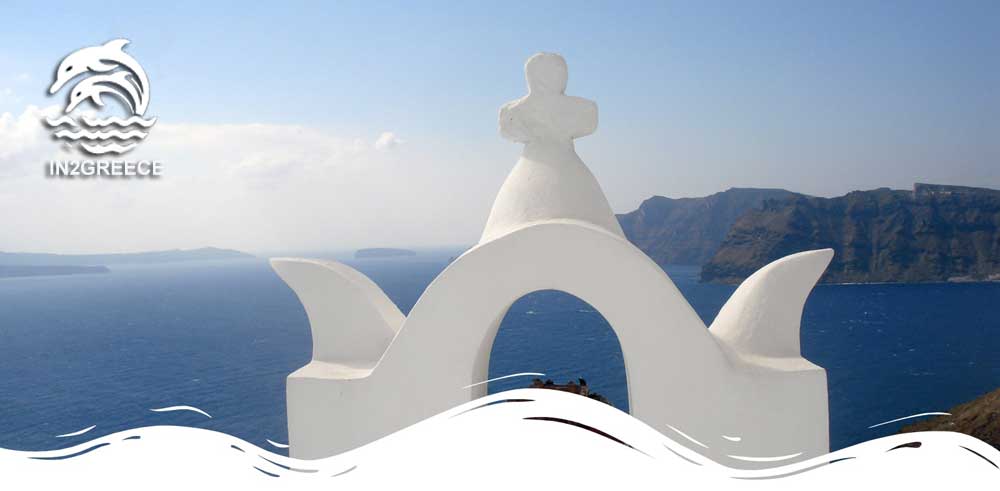Species of Dolphins in the Greek Seas
Dolphins are a significant part of the marine biodiversity found in the Aegean and Ionian Seas in Greece. These areas are crucial habitats for various species of dolphins due to the relatively warm waters and abundant food sources available.
In Greece, multiple species of dolphins like the common dolphin, bottlenose dolphin, and striped dolphin are found. The common dolphin, once prevalent, is now facing challenges such as diminished populations due to environmental pressures and human activities. The Gulf of Corinth, a significant habitat for the common dolphin, illustrates the drastic decline in their numbers, with only a few individuals left in the wild.
The bottlenose dolphins, which are more adaptable, are frequently seen and are the most common species in Greek waters. These dolphins are often found in areas with high human activity due to their sociable nature and ability to adapt to various environments. However, this also makes them more vulnerable to threats like fishing nets and boat traffic.
Species of dolphins in Greece
Common Dolphin (Delphinus delphis) – Once widespread, the common dolphin has seen a significant reduction in numbers and is now considered endangered in some parts of its range, including certain areas in Greece. They are known for their beautiful colors and patterns and were frequently depicted in ancient Greek art.
Bottlenose Dolphin (Tursiops truncatus) – Perhaps the most well-known and observed species, bottlenose dolphins are found in varying environments from coastal areas to open seas around Greece. They are highly intelligent and sociable, which makes them a favorite among both researchers and tourists.
Striped Dolphin (Stenella coeruleoalba) – This species is predominantly found in the deeper offshore waters but can also occasionally be seen closer to the coast. Striped dolphins are known for their robust bodies and striking stripe patterns running from the eye to the flipper.
Risso’s Dolphin (Grampus griseus) – These dolphins are easier to identify due to their unique body markings and coloration. Risso’s dolphins prefer deeper water, which makes sightings less common near the shore.
Common Dolphin (Delphinus delphis) – Specifically mentioned as critically endangered in parts of its range such as the Gulf of Corinth, this species is under significant threat from hybridization with other dolphin species as well as from environmental pressures.
Conservation efforts
Conservation efforts in Greece for dolphins are multifaceted and encompass a variety of strategies aimed at protecting these marine mammals and their habitats. Central to these efforts is the establishment of marine protected areas, where activities that could harm dolphins, such as certain types of fishing and heavy boat traffic, are restricted or carefully managed. These areas are crucial for providing safe environments where dolphins can feed, breed, and raise their young without the immediate threats posed by human interference.
Another significant aspect of dolphin conservation in Greece involves research and monitoring programs. Scientists and conservationists conduct studies to better understand dolphin behavior, population sizes, and migration patterns. This information is critical for making informed decisions about how to protect them. For example, knowing the migration routes of dolphins can help in planning boat traffic routes to minimize collisions between vessels and dolphins.
Public awareness and education campaigns are also a key component of conservation efforts. By informing the public about the threats dolphins face, such as pollution and accidental capture in fishing nets, conservation organizations hope to foster a more informed and responsible approach to marine resource use. Educational programs are particularly targeted towards fishermen and tour operators, who directly interact with marine environments, to promote practices that are less harmful to dolphins.
Legislation and regulations play a vital role as well, with Greek and European Union laws providing frameworks for dolphin conservation. These laws not only regulate activities that might directly harm dolphins but also address broader environmental issues like pollution and habitat destruction.
Finally, rescue and rehabilitation initiatives are in place to help dolphins that have been injured or are in distress. Facilities equipped to rehabilitate sick or injured dolphins are an important part of conservation efforts, aiming to return healthy individuals back to the wild whenever possible.
